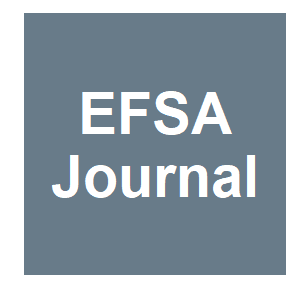
Keywords: environment

|
The Anthropocene as the End of Nature? Why Recognizing Interventionism Is Key in Coming to Terms with the AnthropoceneK. Boersma, ENVIRONMENTAL ETHICS, 44:195-219. 2023.
In this article, I address and argue against the tendency to understand the anthropocene as inaugurating the end of nature. I conduct two key moves. First, by way of an engagement with the concept of anthropocene technology I explain how understanding the anthropocene as the end ... Keywords: agriculture, environment, Gene drive, human health, risk, safety |

|
Environment Agency Austria, EPA Network, 2021.
Gene drive applications are likely to entail considerable ethical and ecological implications. Apart from societal issues, they pose challenges for environmental risk assessment (ERA), monitoring and risk management: 1)GDOs differ fundamentally from classical GMOs. Notably, GDOs ... Keywords: agriculture, environment, Gene drive, human health, risk, safety |

|
The legal regulation of gene drive technologiesC. Elves, Univeristy of Oxford, 2021.
Gene drive technologies purport to provide a panacea and yet in doing so present unprecedented risks that threaten to change, potentially irreversibly, the way in which we live in the world. Gene drive technologies raise questions about what ends societies ought to seek for their ... Keywords: agriculture, environment, Gene drive, human health, risk, safety |

|
Conservation implications of disease controlJ. C. Buck, S. B. Weinstein, G. Titcomb and H. S. Young, Frontiers in Ecology and the Environment, 6. 2020.
Infectious diseases have indelibly altered human history and, in doing so, have shaped the ecology and conservation of the natural world. Attempts to control diseases often result in adverse environmental impacts, including habitat degradation and unintended outcomes such as ... Keywords: agriculture, environment, Gene drive, human health, risk, safety |

|
The EU not ready for the release of Gene drive organisms into the environment.Pensoft Publishers, ScienceDaily, 2020.
In their study, published in the open-access journal BioRisk, an international group of scientists led by Marion Dolezel from the Environment Agency Austria, discuss the potential risks and impacts on the environment. Keywords: agriculture, environment, Gene drive, human health, risk, safety |

|
GENE DRIVE ORGANISMS: Implications for the environment and nature conservationM. Dolezel, S. Simon, M. Otto, M. Engelhard and W. Zughart, Umweltbundesamt, 2020.
Recent advances in biotechnology aim at the genetic modification of wild living populations. Some potential applications consider self-propagating genetic elements to generate gene drive organisms (GDOs), also for nature conservation. Due to the potential of GDOs to spread ... Keywords: agriculture, environment, Gene drive, human health, risk, safety |

|
Stakeholder workshop “Problem formulation for the environmental risk assessment of gene drive modified insects” (15 May 2019, Brussels)European Food Safety, A., Devos, Y., Gallani, B. & Firbank, L. G, A. European Food Safety, Y. Devos, B. Gallani and L. G. Firbank, 17:1819E. 2020.
Recent advances in molecular and synthetic biology are enabling the engineering of gene drives that spread genes of interest through interbreeding populations at a frequency greater than the rate expected by simple Mendelian inheritance. At present, insects represent the most ... Keywords: agriculture, environment, Gene drive, human health, risk, safety |

|
Agricultural pest control with CRISPR-based gene drive: time for public debateV. Courtier-Orgogozo, B. Morizot and C. Boëte, EMBO Reports, 18:878-880. 2017.
Gene drive technology to control disease vectors or pests has great potential for addressing humanitarian and public health problems. Its application for pest control in agriculture, however, raises important environmental, social and ethical issues. Keywords: agriculture, environment, Gene drive, human health, risk, safety |

|
CRISPR-Cas9: Gene Drive SafeguardsWyss Institute, Harvard University, 2015.
In this animation, learn how effective safeguarding mechanisms developed at the Wyss Institute and Harvard Medical School can be applied to ensure gene drive research is done responsibly in the laboratory. These safeguards enable responsible scientific investigation into how gene ... Keywords: agriculture, environment, Gene drive, human health, risk, safety |

Contact
David O’Brochta
Foundation for the
National Institutes of Health
geneconvenevi@fnih.org
RSS

